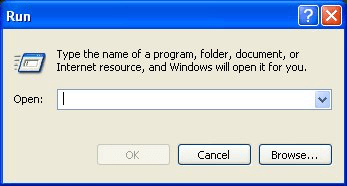Please Note: This article is written for users of the following Microsoft Excel versions: 97, 2000, 2002, and 2003. If you are using a later version (Excel 2007 or later), this tip may not work for you. For a version of this tip written specifically for later versions of Excel, click here: Starting in Safe Mode.
Written by Allen Wyatt (last updated November 2, 2024)
This tip applies to Excel 97, 2000, 2002, and 2003
If you are having problems with Excel, it could be because of the files and add-ins that are loaded whenever you start Excel. To test this theory, you can start Excel in "safe mode." How you do it depends on the version of Windows you are using. If you are using Windows 7 or Vista, follow these steps:
excel.exe /s
If you are using Windows XP, you can follow these steps:

Figure 1. The Run dialog box.
"c:\program files\microsoft office\office\excel.exe" /s
Excel starts, but in doing so, it bypasses all the files in the various startup folders (such as XLStart) and skips loading the toolbar file (Excel.xlb). You know you are in safe mode because the words "Safe Mode" appears in the title bar. You can use Excel as you normally would, and then exit the program. The next time you start the program—without the safe mode switch—it runs as it normally does.
ExcelTips is your source for cost-effective Microsoft Excel training. This tip (3365) applies to Microsoft Excel 97, 2000, 2002, and 2003. You can find a version of this tip for the ribbon interface of Excel (Excel 2007 and later) here: Starting in Safe Mode.

Solve Real Business Problems Master business modeling and analysis techniques with Excel and transform data into bottom-line results. This hands-on, scenario-focused guide shows you how to use the latest Excel tools to integrate data from multiple tables. Check out Microsoft Excel Data Analysis and Business Modeling today!
Unlike some other programs (like Word), Excel doesn't provide a way for you to embed fonts in a workbook. Here's a ...
Discover MoreThe serial number assigned to your copy of Excel is valuable. It allows you to get support and is necessary for some ...
Discover MoreExcel can check the data and formulas in your worksheet to see if it detects any errors. The rules used for this checking ...
Discover MoreFREE SERVICE: Get tips like this every week in ExcelTips, a free productivity newsletter. Enter your address and click "Subscribe."
There are currently no comments for this tip. (Be the first to leave your comment—just use the simple form above!)
Got a version of Excel that uses the menu interface (Excel 97, Excel 2000, Excel 2002, or Excel 2003)? This site is for you! If you use a later version of Excel, visit our ExcelTips site focusing on the ribbon interface.
FREE SERVICE: Get tips like this every week in ExcelTips, a free productivity newsletter. Enter your address and click "Subscribe."
Copyright © 2026 Sharon Parq Associates, Inc.
Comments